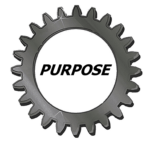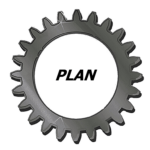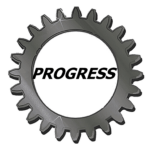Decision Matrix
The decision matrix not only provides a systematic method for evaluating options but also enables us to optimize our decision-making process.

Chapter 1: What is it?

The purpose of a decision matrix is to bring clarity to complex decision-making situations. By breaking down a decision into its constituent parts, a decision matrix enables a comprehensive analysis of options. It ensures that decisions are made based on objective criteria and data, rather than relying solely on intuition or personal biases.
Chapter 2 : When do I use it?

When it comes to making decisions, we often rely on our gut instincts or rely on limited information. However, these approaches can be subjective and may lead to suboptimal outcomes. This is where the decision matrix comes in. By utilizing a decision matrix, we can objectively evaluate various options based on predetermined criteria and assign scores to each option. This systematic approach allows us to consider all relevant factors and make informed decisions that align with our goals.
Chapter 3: How do I use it?

1. Identify your options: Start by identifying all the possible options available to you. For example, if you’re trying to decide which car to buy, make a list of the different models you’re considering.
2. Determine your criteria: Next, define the criteria that are important to you in making this decision. These could include factors like cost, fuel efficiency, safety, and design.
3. Assign weights: Assign weights to each criterion based on their relative importance. For example, if safety is more important to you than design, give it a higher weight.
4. Rate each option: Now, rate each option for each criterion on a scale, typically from 0 to 5. Use this rating to evaluate how well each option meets each criterion.
5. Calculate the weighted scores: Multiply the ratings of each option by their respective weights and calculate the weighted scores for each criterion.
6. Sum the scores: Sum the weighted scores for each option to get a total score. The option with the highest score is likely the best choice based on your criteria.
7. Make your decision: Finally, review the results and make your decision based on the highest-scoring option. Voila! You’ve successfully used the decision matrix to make an informed choice.
Chapter 4 :Why should I use it?

Making decisions is an integral part of our daily lives. Whether it’s choosing the right career path, selecting the perfect investment opportunity, or deciding which college to attend, the choices we make have a direct impact on our success. To ensure we make informed and effective decisions, we need a reliable tool that can help us evaluate our options objectively. One such tool is the decision matrix. The decision matrix not only provides a systematic method for evaluating options but also enables us to optimize our decision-making process.
Chapter 5 : Collaborative Benefits
![]()
I need help…
Not all help costs money. Requests for additional information and potential application for your industry, helps us to improve the training experience, at no charge to you.
When do I need collaborative services?
Collaboration has proven time and time again to be a powerful tool in optimizing performance and driving efficiency in various aspects of life. Whether it is in the workplace, educational settings, or even within personal relationships, collaboration has the ability to unlock untapped potential and enhance productivity. By leveraging the collective intelligence and diverse skills of a group, individuals can capitalize on their strengths, overcome challenges, and achieve remarkable results.
What do I get with collaborative services?
Our Role – Quality coordinating – Analyze your system, review your policies, and suggest process improvements.
We help you use a chosen template and apply it to your business model, with or without action plans.
Course includes a shareable document for use or for future collaboration.
1 hour online training (one on one training) no minimum participates

Download a Decision Matrix Template
There’s lots of bad reasons to start a company. But there’s only one good, legitimate reason, and I think you know what it is: it’s to change the world.Templates are like a secret weapon in the arsenal of content creators. They provide a foundation, a starting point that saves us time and energy.
Mobile Format
By using Google Docs we offer an extensive selection of free templates, covering various categories with no special apps to download making them truly mobile. These templates are also available in Microsoft Word format. These templates are designed by professionals, ensuring a polished and visually appealing outcome. With a few clicks, we can have a well-structured document, complete with headings, subheadings, and placeholders for our content. These templates act as a guiding hand, making it easier for us to organize our thoughts and ideas effectively. They eliminate the need to spend hours formatting and styling our documents, enabling us to focus on the content creation itself.
Simplify Creation Content
The true power of templates lies in their ability to simplify and streamline the content creation process. By using pre-designed layouts and formats, we can save valuable time and effort. Rather than starting from a blank canvas and grappling with design decisions, we can simply choose a template that aligns with our desired style and purpose. This not only speeds up the creation process but also ensures a consistent and professional look for our content.
Templates also allow for customization, enabling us to personalize the document according to our needs. This level of flexibility empowers us to create visually stunning content without the need for advanced design skills. Templates break down the barriers between creativity and execution, making content creation accessible to all.
Unleash Your Creativity
Effortless content creation is within our reach, thanks to the power of free templates in Google Docs and Microsoft Word. By utilizing these templates, we can simplify our workflows, save time, and produce high-quality content without the need for extensive design knowledge. Unlocking the potential of templates allows us to focus on what truly matters – our ideas, thoughts, and messages. So why start from scratch when we have a vast library of templates waiting to be explored? Embrace the convenience and unleash your creativity by utilizing the power of free templates in your next content creation endeavor.
What is a Decision Matrix?
Watch this Video.
The decision matrix framework is a powerful tool that can help individuals and organizations make better decisions by providing a systematic approach to evaluate options based on multiple criteria. It is particularly useful in situations where there are several alternatives and various factors to consider. The decision matrix allows decision-makers to objectively assess each option’s strengths and weaknesses and weigh them against the predetermined criteria.
As You Watch This Video
As you watch this video to understand the available template;
1. List all of the options available on one side the list all the factors on the other side.
2. Weigh the option by rating each combination.
3. Decide which option is the best choice.
Still need to visualize, understand the design of the decision matrix and how the method is tested, see the following case studies.

Case Study 1 - Led to Manage LLC
How we used the Matrix
How we used this format
1. We decided to use the decision matrix not to decision on options but to understand the risk and impact on pain points for the customer and on Led to Manage LLC.
2. In developing a tailored course for a target profession and industry, we listed the information needed to make an effective presentation down one column and the affecting factors on the process across the top of the matrix.
3. For each decision, we listed the why for the information needed. Liked the pain point for Bothe the customer ini giving the information and the pain point for not have the information.
4. For replay the retraining condition was listed for the evaluation or impact the missing information has on the development of the course.
5. The process wait time was determine for a normal, have the information and the wait time for not having the information.
6. Liked what is to be deliver and at the bottom the cumulative wait time plus what correspondence and response wait time. (2 to 4 hours)
Lessons Learned
1. Once the matrix was created we wanted to weighed the risk of each option and factor based in it’s impact on the course development, the incident rate for not getting the information and the ability for the customer to identify that information was missing.
.2. Knowing the risk rating, we addressed the highest rating, and the location on the site to ask the question. We did not to solicit the information any sooner than needed.
3. It was noted on the matrix, that the less information provided at the point of need equates to a longer response time, to due our research on the customer, if known, or the need to correspond back and forth to obtain the minimal information need for the creation of a tailored course content for collaboration, facilitation or on/off site training